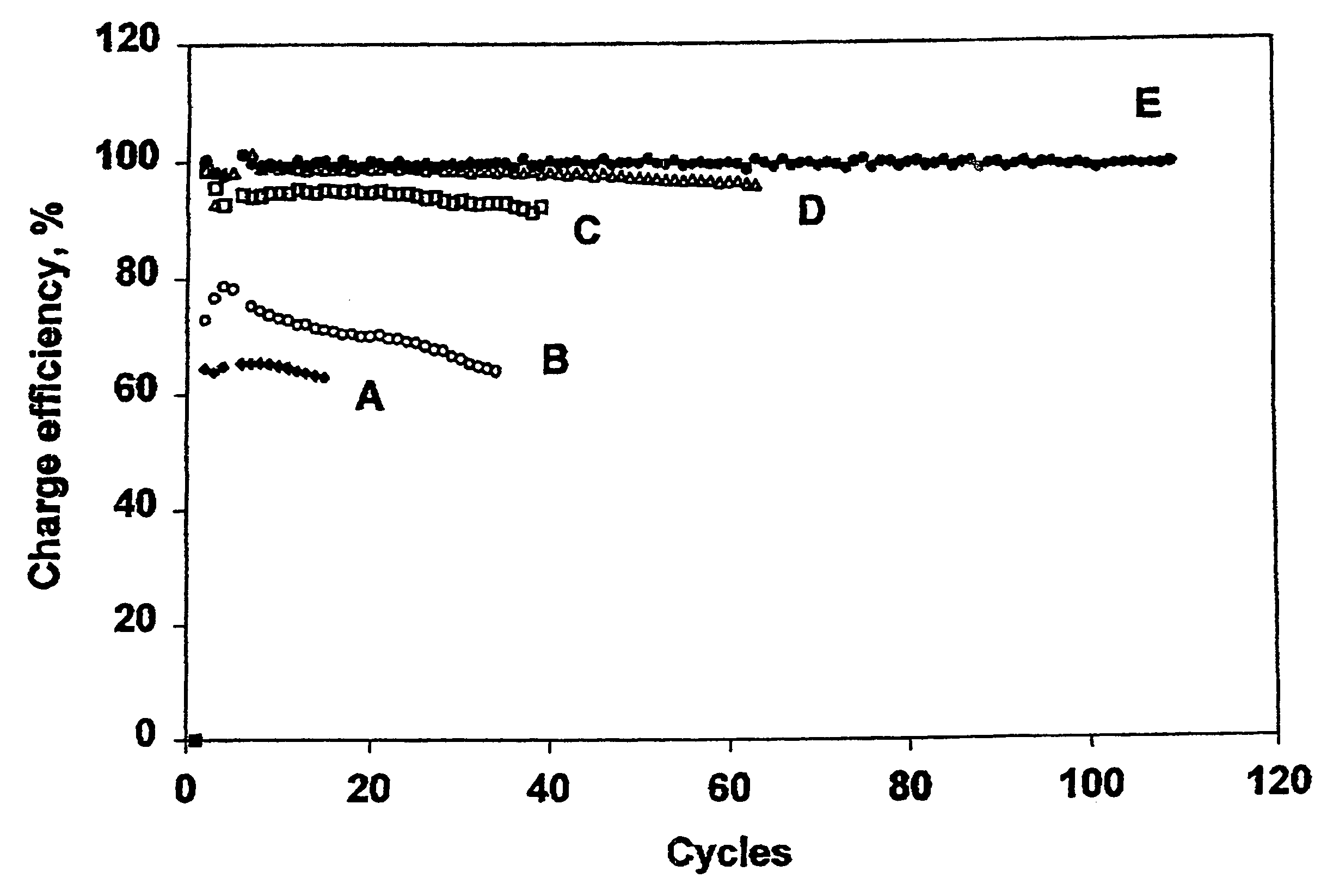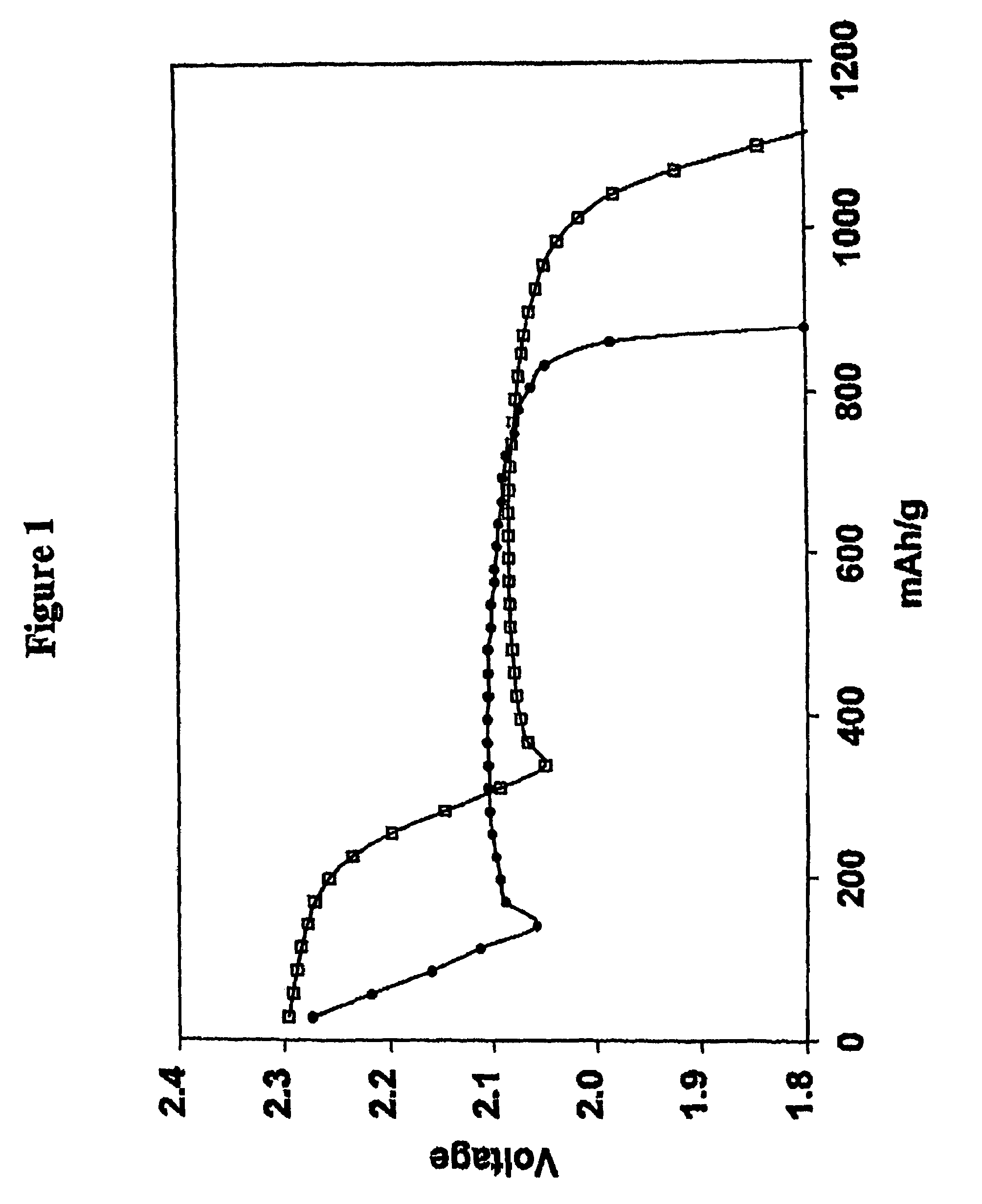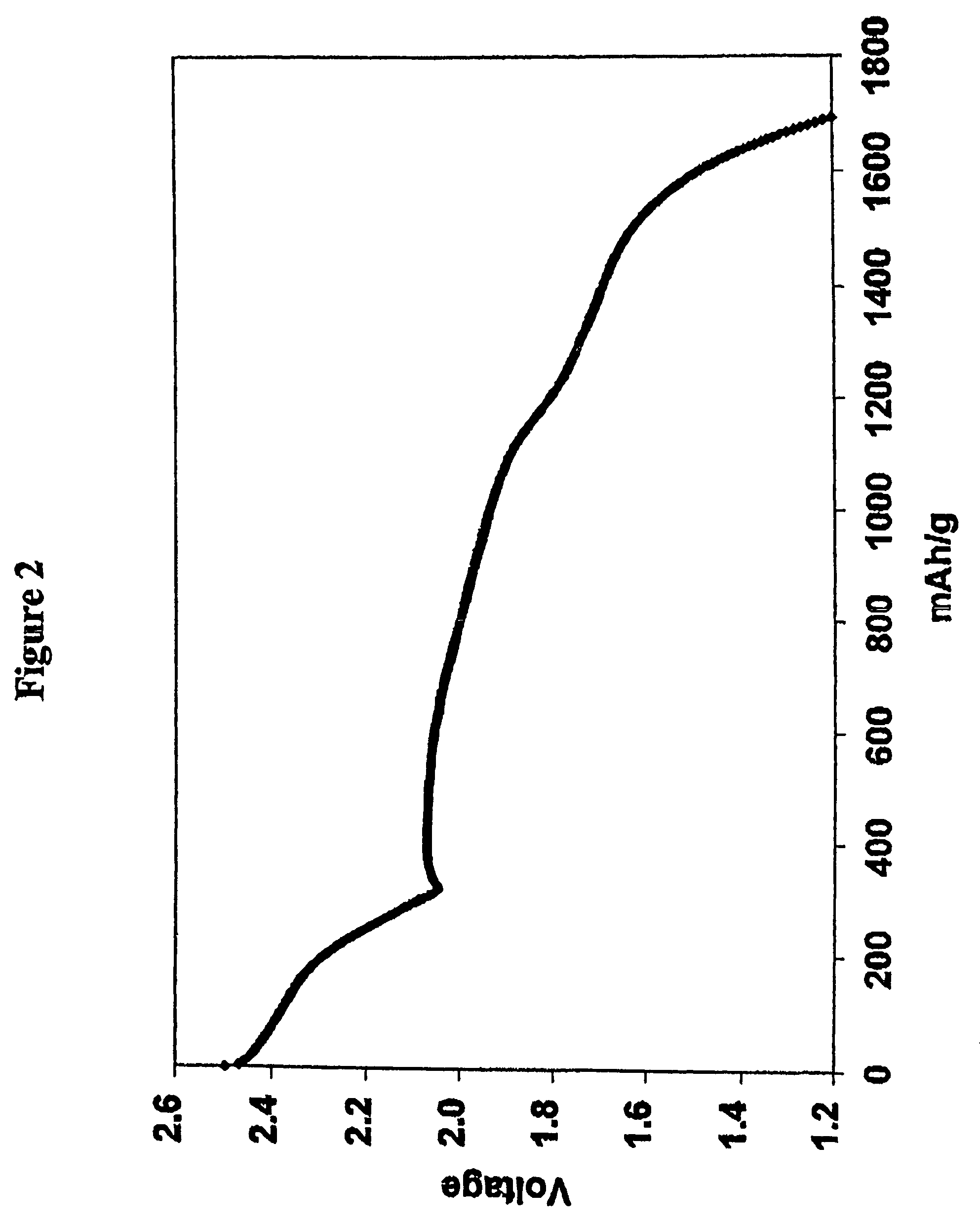Methods of charging lithium sulfur cells
a lithium sulfur cell and lithium sulfur technology, applied in secondary cell servicing/maintenance, cell components, greenhouse gas reduction, etc., can solve the problems of reducing the capacity of the cell, reducing the discharge voltage, and li/s cell sei formation is typically ineffective in preventing or minimizing lithium consuming reactions, etc., to achieve low self-discharge rate, high cathode utilization rate, and high charge-discharge efficiency
- Summary
- Abstract
- Description
- Claims
- Application Information
AI Technical Summary
Benefits of technology
Problems solved by technology
Method used
Image
Examples
example 1
[0091]The electrolyte was that of Comparative Example 1 except that lithium nitrate at a concentration of 0.002 m was incorporated in the 0.5 m electrolyte solution of lithium imide in a 50 / 50 mixture of DOL and DME. In other words 0.002 moles of lithium nitrate (0.14 g) was added per Kg of the DOL / DME solvent (0.14 mg / g of solvent). Cycling of the cell was performed by the procedure of Comparative Example 1 with the results shown in Tables 2 and 3. Charge-discharge cycles were continued until the discharge capacity diminished to 900 mAh (874 mAh / g of sulfur; 52% utilization), which was 34 cycles and the accumulated capacity 33.7 Ah. 9 cycles were achieved before utilization fell below 60% (1005 mAh / g of sulfur).
example 2
[0092]The electrolyte was that of Comparative Example 1 except that lithium nitrate at a concentration of 0.1 m (6.9 mg / g of solvent) was incorporated in the 0.5 m electrolyte solution of lithium imide in a 50 / 50 mixture of DOL and DME. Cycling of the cell was performed by the procedure of Comparative Example 1 with the results shown in Tables 2 and 3. Charge-discharge cycles were continued until the discharge capacity diminished to 900 mAh (874 mAh / g of sulfur), which was 33 cycles and the accumulated capacity 37.1 Ah. 25 cycles were achieved before utilization fell below 60% (1005 mAh / g of sulfur).
example 3
[0093]The electrolyte was that of Comparative Example 1 except that lithium nitrate at a concentration of 0.2 m (13.8 mg / g of solvent) was incorporated in the 0.5 m electrolyte solution of lithium imide in a 50 / 50 mixture of DOL and DME. Cycling of the cell was performed by the procedure of Comparative Example 1 with the results shown in Tables 2 and 3. Charge-discharge cycles were continued until the discharge capacity diminished to 900 mAh (874 mAh / g of sulfur; 52% utilization), which was 46 cycles and the accumulated capacity 51.6 Ah. 39 cycles were achieved before utilization fell below 60% (1005 mAh / g of sulfur).
PUM
| Property | Measurement | Unit |
|---|---|---|
| voltage | aaaaa | aaaaa |
| termination voltage | aaaaa | aaaaa |
| termination voltage | aaaaa | aaaaa |
Abstract
Description
Claims
Application Information
 Login to View More
Login to View More - R&D
- Intellectual Property
- Life Sciences
- Materials
- Tech Scout
- Unparalleled Data Quality
- Higher Quality Content
- 60% Fewer Hallucinations
Browse by: Latest US Patents, China's latest patents, Technical Efficacy Thesaurus, Application Domain, Technology Topic, Popular Technical Reports.
© 2025 PatSnap. All rights reserved.Legal|Privacy policy|Modern Slavery Act Transparency Statement|Sitemap|About US| Contact US: help@patsnap.com



